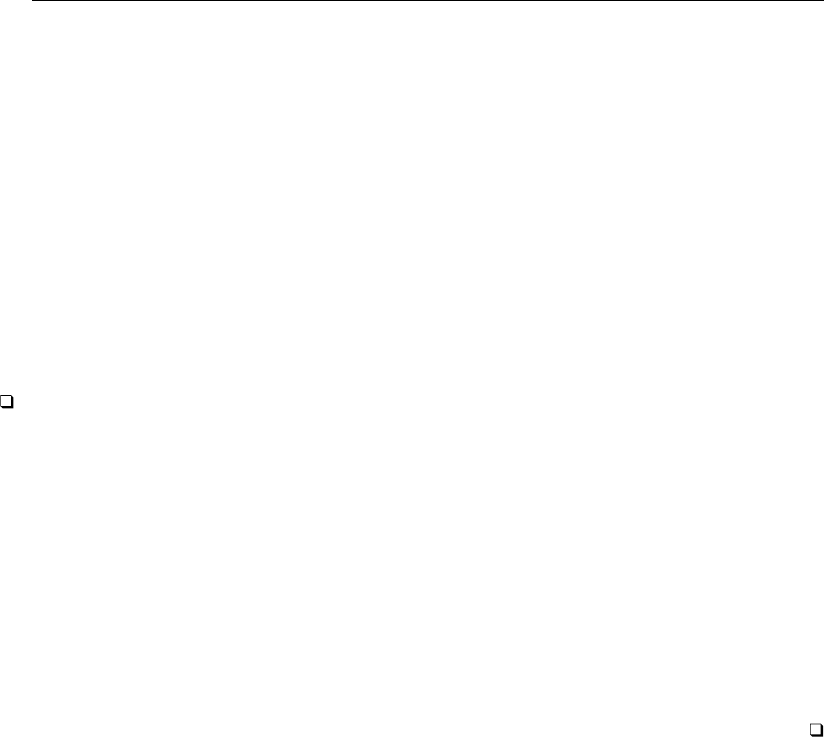
Title stata.com
if — if programming command
Syntax Description Remarks and examples Reference Also see
Syntax
if exp { or if exp single command
multiple commands
}
which, in either case, may be followed by
else { or else single command
multiple commands
}
If you put braces following the if or else,
1. the open brace must appear on the same line as the if or else;
2. nothing may follow the open brace except, of course, comments; the first command to be
executed must appear on a new line;
3. the close brace must appear on a line by itself.
Description
The if command (not to be confused with the if qualifier; see [U] 11.1.3 if exp) evaluates exp. If
the result is true (nonzero), the commands inside the braces are executed. If the result is false (zero),
those statements are ignored, and the statement (or statements if enclosed in braces) following the
else is executed.
Remarks and examples stata.com
Remarks are presented under the following headings:
Introduction
Avoid single-line if and else with ++ and -- macro expansion
Introduction
The if command is intended for use inside programs and do-files; see [U] 18.3.4 Macros and
expressions for examples of its use.
1

2 if — if programming command
Example 1
Do not confuse the if command with the if qualifier. Typing if (age>21) summarize age will
summarize all the observations on age if the first observation on age is greater than 21. Otherwise,
it will do nothing. Typing summarize age if age>21, on the other hand, summarizes all the
observations on age that are greater than 21.
Example 2
if is typically used in do-files and programs. For instance, let’s write a program to calculate the
Tukey (1977, 90–91) “power” function of a variable, x:
. program power
if ‘2’>0 {
generate z=‘1’^‘2’
label variable z "‘1’^‘2’"
}
else if ‘2’==0 {
generate z=log(‘1’)
label variable z "log(‘1’)"
}
else {
generate z=-(‘1’^(‘2’))
label variable z "-‘1’^(‘2’)"
}
end
This program takes two arguments. The first argument is the name of an existing variable, x.
The second argument is a number, which we will call n. The program creates the new variable z. If
n > 0, z is x
n
; if n = 0, z is log x; and if n < 0, z is −x
n
. No matter which path the program
follows through the code, it labels the variable appropriately:
. power age 2
. describe z
storage display value
variable name type format label variable label
z float %9.0g age^2
Technical note
If the expression refers to any variables, their values in the first observation are used unless explicit
subscripts are specified.
Avoid single-line if and else with ++ and -- macro expansion
Do not use the single-line forms of if and else—do not omit the braces—when the action
includes the ‘++’ or ‘--’ macro-expansion operators. For instance, do not code
if (. . . ) somecommand ‘++i’

if — if programming command 3
Code instead,
if (. . . ) {
somecommand ‘++i’
}
In the first example, i will be incremented regardless of whether the condition is true or false
because macro expansion occurs before the line is interpreted. In the second example, if the condition
is false, the line inside the braces will not be macro expanded and so i will not be incremented.
The same applies to the else statement; do not code
else somecommand ‘++i’
Code instead,
else {
somecommand ‘++i’
}
Technical note
What was just said also applies to macro-induced execution of class programs that have side
effects. Consider
if (. . . ) somecommand ‘.clspgm.getnext’
Class-member program .getnext would execute regardless of whether the condition were true or
false. Here code
if (. . . ) {
somecommand ‘.clspgm.getnext’
}
Understand that the problem arises only when macro substitution causes the invocation of the class
program. There would be nothing wrong with coding
if (. . . ) ‘.clspgm.getnext’
Reference
Tukey, J. W. 1977. Exploratory Data Analysis. Reading, MA: Addison–Wesley.
Also see
[P] continue — Break out of loops
[P] foreach — Loop over items
[P] forvalues — Loop over consecutive values
[P] while — Looping
[U] 18 Programming Stata
